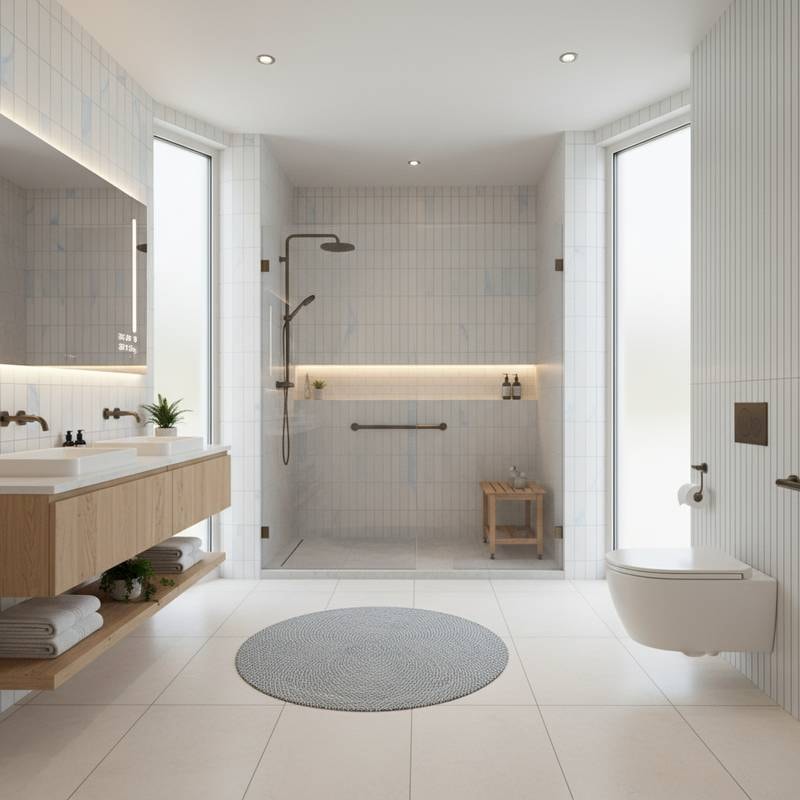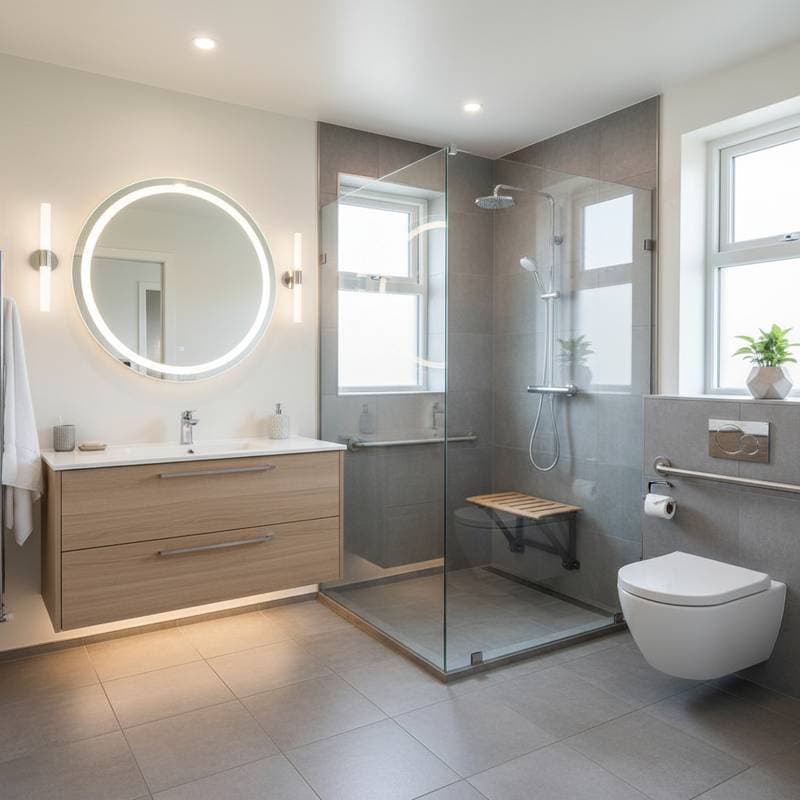2025 Universal Design Trends for Aging-in-Place Bathrooms
Aging gracefully at home starts with intentional design choices. The bathroom serves as a daily hub for personal care and relaxation, influencing how individuals maintain independence as needs change over time. Universal design principles emphasize accessibility integrated with aesthetic appeal, guiding architects and interior designers to reimagine this vital space. Current innovations merge elegance, safety features, and advanced technology to produce adaptable bathrooms suitable for all life stages.
The following trends highlight key developments in universal design for aging-in-place bathrooms. Each approach harmonizes practical functionality with refined style, ensuring spaces that support well-being without apparent compromise.
1. Slip-Resistant Flooring with Natural Appeal
Safety forms the foundation of any effective bathroom design, particularly on surfaces prone to moisture. Contemporary options include porcelain tiles featuring R11-rated textures that replicate the look of natural stone such as limestone or slate. These materials extend seamlessly from the floor into the shower area, using subtle variations in texture to delineate zones rather than stark color differences.
For added comfort underfoot, luxury vinyl planks in warm oak finishes deliver reliable slip resistance alongside a residential feel. Select products certified for wet environments to guarantee durability. This selection process prioritizes warmth and stability, transforming potential hazards into inviting, secure pathways.
2. Color Palettes that Support Visual Ease
Strategic color choices enhance accessibility by improving visibility and spatial awareness. High-contrast elements clarify edges and boundaries, which proves especially helpful for depth perception. Palettes draw from natural inspirations, incorporating warm grays, soft sands, and gentle blue-greens to foster tranquility.
Consider Benjamin Moore’s Balboa Mist for walls to offer gentle contrast against white fixtures, or Farrow & Ball’s Skimming Stone for a similarly subdued effect. Pair these with European oak-look porcelain flooring to introduce organic warmth without upkeep demands. Such combinations ensure environments remain intuitive and restorative.
3. Layered Lighting for Clarity and Calm
Effective lighting addresses both safety and ambiance, adapting to varying needs throughout the day. Layered systems combine recessed ceiling fixtures for overall illumination with LED strips positioned under vanities and along baseboards for nighttime navigation. This setup minimizes glare while providing consistent visibility.
Opt for 3000K warm white LEDs to deliver a natural, flattering glow. Integrate LED panels into mirrors to eliminate shadows during grooming routines, and include dimmer switches for customizable intensity. These elements cultivate a serene, spa-inspired atmosphere that promotes both practicality and relaxation.
4. Integrated Seating and Spa-Level Comfort
Seating solutions elevate the shower experience by prioritizing ease and luxury. Built-in benches now match surrounding materials, such as teak slats sealed for moisture resistance or Corian solid surfaces for a monolithic appearance. This integration avoids visual disruption while enhancing usability.
In one notable installation by Luna Works Studio, a floating bench with underlighting created an ethereal effect within the shower enclosure. The illumination served dual purposes: enhancing mood and offering low-level guidance during low-visibility hours. Such designs exemplify how comfort and safety can coexist with sophisticated appeal.
5. Personalized Design for Lifelong Use
Customization stands as the cornerstone of adaptable spaces, moving beyond one-size-fits-all approaches. Features like adjustable showerheads, modular storage units, and repositionable seats allow users to modify the environment according to personal preferences and evolving requirements. Engage occupational therapists early in the planning phase to identify potential adaptations.
Aesthetic options span minimalist setups with pale terrazzo and satin chrome accents to classic configurations featuring Benjamin Moore’s Hale Navy cabinetry and detailed millwork. The emphasis lies on versatility that preserves style over decades. This tailored strategy ensures the bathroom remains a personal refuge throughout life.
Implementing Universal Design in Your Bathroom Remodel
A well-designed aging-in-place bathroom fosters independence and enhances daily comfort through its aesthetic and functional harmony. These universal design trends underscore a commitment to environments that integrate seamlessly with users' lives, incorporating supportive elements amid beautiful surroundings.
To embark on a remodel, assess current movement patterns, natural light sources, and essential routines within the space. Partner with experts versed in accessibility guidelines and design principles to align technical specifications with visual goals. This collaborative method yields bathrooms that extend beyond utility to provide genuine nurturing support.
Ultimately, universal design in the bathroom affirms personal dignity and eases transitions across life phases. It crafts sanctuaries where style and safety intertwine, allowing residents to thrive in familiar settings with confidence and grace.









